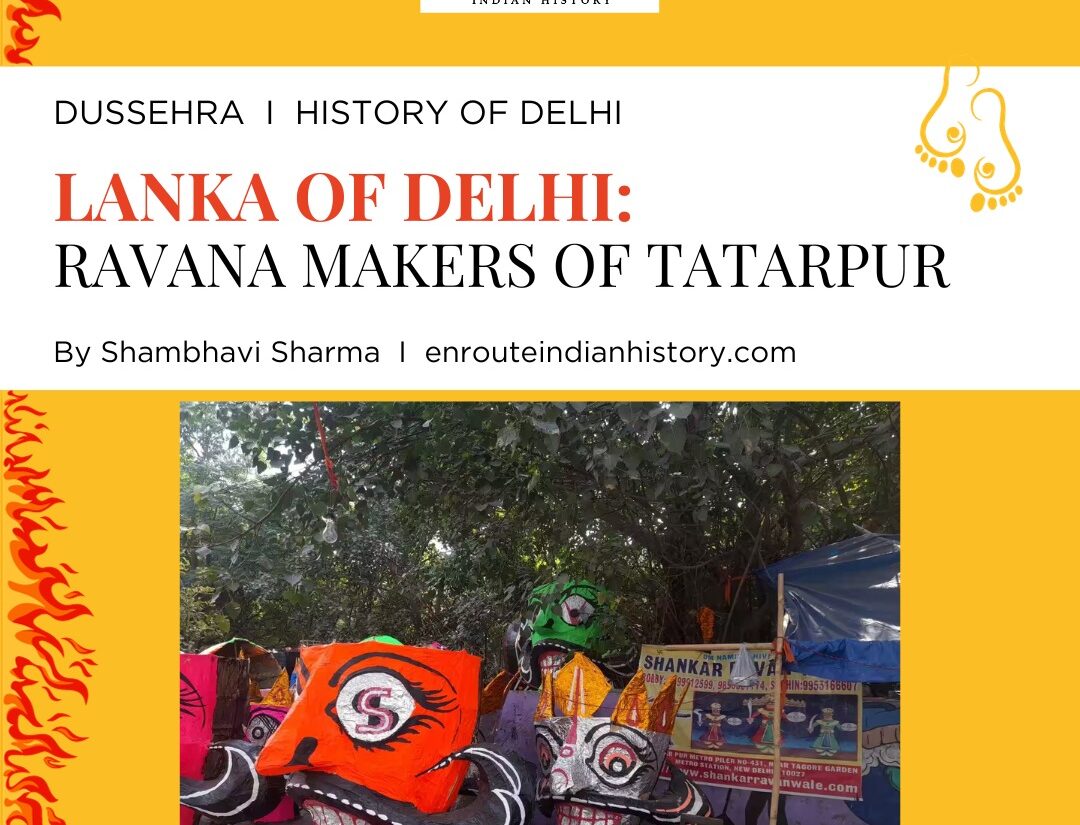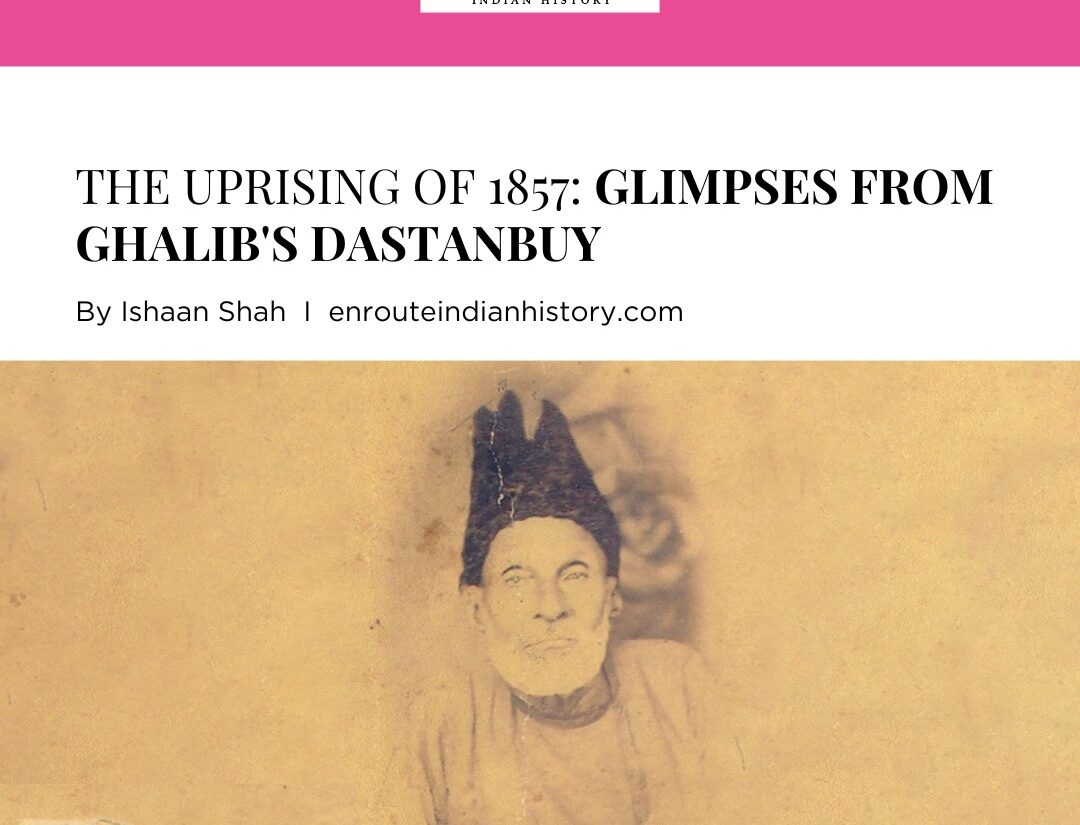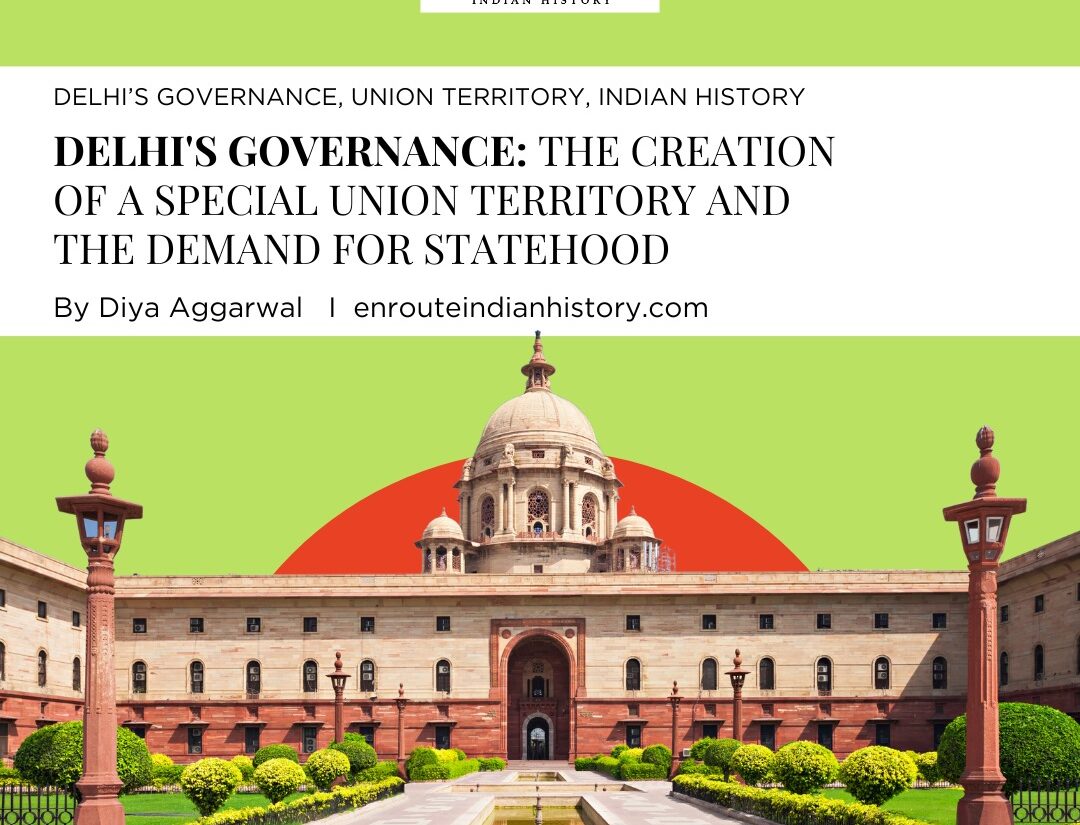
In the bustling streets of Delhi, where tradition and modernity intertwine, a unique and awe-inspiring craft comes to life in the weeks leading up to one of India’s most celebrated festivals, Dussehra. The city transforms into a canvas for creativity, as talented artisans meticulously craft towering effigies of the legendary demon king, Ravana. These effigy makers, with their deft hands, artistic vision, and unwavering dedication, play a pivotal role in the grand spectacle of Dussehra. The primary significance of Dussehra is the celebration of the triumph of good over evil. It marks the day when Lord Rama, an avatar of Lord Vishnu, defeated the demon king Ravana, who had kidnapped Rama’s wife, Sita. Rama’s victory symbolizes the victory of righteousness (dharma) over evil (dharma) and the restoration of moral order.
The area between Tagore Garden and Subhash Nagar in West Delhi, a locality known as Tatarpur, witnesses the annual birth of Ravan, the infamous antagonist from the epic Ramayana and a symbol of evil. Tatarpur serves as his kingdom and is in high demand, albeit only to be set ablaze during the celebration of Dussehra. Titarpur has gained renown for its effigies, and its market is acknowledged as the largest of its kind in Asia, catering not only to Delhi but also to regions such as Rajasthan, Uttar Pradesh, Punjab, and occasionally even international customers.
This location is colloquially referred to as the “Lanka of Delhi”. Tatarpur, a modest village in West Delhi, is celebrated for being the epicentre of “Ravan makers of Delhi.” The “Ravanwalas of Tatarpur,” as the artisans are commonly known, constitute a diverse group comprising both the original artisan community and temporary labourers who flock from various parts of Delhi and Uttar Pradesh during the months of August, September, and October, seeking to earn extra income. During this period, the artisans can be seen scattered along the streets, meticulously crafting Ravan effigies of various sizes, an essential component of the grand celebration of Dussehra, one of India’s most significant Hindu festivals.
Each year, the skilled craftsmen in Tatarpur painstakingly construct the colossal Ravana effigies, and the process itself reflects a traditional yet captivating indigenous craft of India. What often goes unnoticed is that this craft is also sustainable, employing eco-friendly materials and techniques.

(Aakriti Handa, 2022|The Quint)
The origins of the Ravana effigy-making enterprise can be traced back to a local lore of the migration of a man from Sikandarabad, Uttar Pradesh, to Delhi in the 1960s. He ventured into the modest trade of funeral and cremation materials, providing an essential service to the community. During one particularly sluggish business season, with the festive period approaching, he encountered a novel idea. He decided to utilize the bamboo logs and fine fabrics, materials typically destined for cremation purposes, to fashion a small effigy. This creation garnered widespread approval and was subsequently ignited in a grand ceremony during Dussehra celebrations.
Motivated by this initial success, the man, now affectionately referred to as “Ravana Baba,” embarked on an annual tradition of crafting effigies during the festive season. In a matter of a few years, he began receiving up to ten orders from affluent patrons and festival organizing committees. Local children would often gather around him, observing his craft, and some even interned with him, earning a quick income. After his passing, these children assumed the responsibility of carrying the tradition forward. Today, they have evolved into master craftsmen who train and mentor new workers and painters under their guidance. The business has expanded significantly, with hundreds of effigies being produced each year. However, despite months of strenuous labour and dedication, the profitability remains dishearteningly low. Consequently, most craftsmen and workers are reluctant to pass down the trade to their own offspring.
Perhaps the most poignant aspect of this narrative is that the memory of “Ravana Baba,” or his true identity, has faded into obscurity. Some claim that his actual name was Ustad Chuttan Lal, but this assertion is met with disagreement among the older craftsmen who were once under his tutelage.

RAVANA DAHAN DURING DUSSEHRA
The artisans responsible for crafting these effigies are, in fact, the Gadia Lohars, a nomadic tribe known as the “Wandering Blacksmiths.” The lineage of the Gadia Lohars traces its origins to the time of Maharana Pratap of Mewar. According to legend, they served as blacksmiths in his army. However, following Maharana Pratap’s defeat in the war against Akbar, the Lohars made a solemn vow never to return to their homeland until India regained its independence. The history of the Gadia Lohars is intertwined with the narratives of various nomadic tribes in India.
The construction of each complete effigy is a meticulous process, involving different parts that are later assembled in a method known as “Napai.” This process commences with the creation of the effigies’ skeletal structure, constructed from slender bamboo strips securely bound together. These bamboo frames form the foundational structure for the head, limbs, and torso of the effigies.
The torso, in particular, takes the shape of long cylindrical structure. These structures are subsequently encased in layers of alternating materials: old chiffon sarees and sturdy sheets of brown paper. The sarees, usually discarded and bought in bulk as recycled fabric from the bustling Sadar Bazaar in North Delhi, serve as the primary wrapping material. The layers of fabric and paper are adhered together using a natural adhesive made from a mixture of sugar and cornflour, effectively serving as a glue.
This layering process, incorporating both fabric and paper, is repeated iteratively until a substantial and resilient surface is established, resulting in a robust and free-standing structure. These structures are then either adorned with a vibrant array of colours through painting techniques or enveloped in colourful paper that ultimately determines the visual appearance of the Ravana effigy. Once completely wrapped and prepared, these structures are left out in the sun to dry. The drying process requires a significant amount of space due to the large size of these effigies. Consequently, they are placed in open areas such as road pavements, dividers, and public parks, extending across the entirety of Tatarpur.
Once these effigies are thoroughly dried, the true artistry of each Ravana maker is unveiled. Gold and silver strips of paper, glimmering accents of glitter, metallic embellishments, and intricate designs all grace the grand structures. The finishing touches involve the application of various patterns and motifs on the effigies, tailored to the specifications of individual customers. Consequently, a diverse array of effigies can be found in and around the area, each one possessing unique features.
While some effigies may boast imposing two-foot-long moustaches, others may exhibit designs predominantly adorned with glistening silver and golden hues, creating a striking visual contrast. Some artisans firmly believe that the essence of each effigy resides in the eyes, emphasizing the importance of crafting eyes that evoke the inherent fear associated with Ravana. Irregular teeth and multiple strands of moustaches are incorporated to add the final touches to the demon’s menacing countenance. These distinct features often become the hallmark of the craftsman, reflecting his personal expression and artistry.
Today, the artists have adapted their techniques and materials to enhance the quality and durability of their Ravana effigies. They source green bamboo sticks from regions like Uttarakhand and Himachal Pradesh to create the sturdy scaffolding for the effigies. Additionally, they employ waterproof paper from Japanese paper bags to drape and decorate the structures. These modern materials not only contribute to the longevity of the effigies but also enhance their visual appeal.
The most seasoned members, who have been part of the Ravan-making community for over six decades, play a crucial role in mentoring and passing on their invaluable skills to the younger generation. This intergenerational transfer of knowledge is an effort to ensure the continuity and preservation of this cherished craft over time.
Once Dussehra festivities have concluded, the unsold effigies do not meet a wasteful end. Instead, they undergo a sustainable process of dismantling and recycling. The cane frames, which serve as the foundational structure of the effigies, are repurposed by skilled carpenters to craft other useful items, such as small-sized furniture. Furthermore, the paper utilized in the effigy-making process is also subject to recycling and reuse. Each effigy is typically sold at prices ranging from Rs. 5,000 to Rs. 25,000 on average
Remarkably, although the mythological character of Ravana is often portrayed as the embodiment of evil, it has become a powerful symbol of identity for the residents of Tatarpur. As a result, the Ravan makers themselves, despite their intricate involvement in crafting these effigies, often decline to witness the grand Ravana burning ceremony. Their deep connection to this art form and the sense of identity it imparts set them apart as a unique and dedicated community within the larger tapestry of Indian traditions.
On a deeper philosophical level, the act of burning the ten-headed Ravana holds a profound significance. It symbolizes the act of purging one’s own mind of the ten inherent evils—namely, lust, anger, attachment, greed, pride, jealousy, selfishness, injustice, cruelty, and ego. By immolating Ravana, it is a symbolic ritual to encourage individuals to rid themselves of these vices and strive for inner purity and righteousness, aligning with the broader message of Dussehra, which celebrates the triumph of good over evil.
The effigy makers of Tatarpur exemplify a timeless cultural tradition that merges artistry, devotion, and adaptability. These craftsmen, hailing from varied backgrounds, toil tirelessly to bring Ravana to life year after year. Their unwavering dedication and ability to adapt to modern materials while retaining the core essence of their craft showcase the resilience of this art form. Here the ‘making of Ravana’ signifies not just the triumph of good over evil, but also a testament to the enduring spirit of a community preserving its heritage. The burning of effigies, grand processions, and the recitation of the Ramayana during Dussehra celebrations serve as vivid reminders of the timeless lessons embedded in this festival. As the flames of the Ravana effigies illuminate the night sky, the spirit of Dussehra rekindles our hope for a brighter, more virtuous future, making this festival a source of inspiration and cultural richness in the tapestry of India’s traditions.
REFERENCES:
- Sen, A., & Sengupta, S. (2014). Demons as gods: De-constructing the ephemeral and informal economy of “Ravana-Effigy” makers of Titarpur in west Delhi. 24th European Conference on South Asian Studies.
- Rustagi, K., & Beg, S. M. (2018, October 21). Come Dussehra and the Ravana makers of Titarpur know who is king. The Indian Express. https://indianexpress.com/article/cities/delhi/dussehra-ravan-effigies-titarpur-artist-5405125/
- PTI, & PTI. (2023). “Ravan Wala Baba” lives on in West Delhi’s Titarpur. Deccan Herald. https://www.deccanherald.com/india/delhi/ravan-wala-baba-lives-on-in-west-delhis-titarpur-2726815
- Ravana making in Tatarpur, New Delhi. (2012, October 30). https://pixels-memories.blogspot.com/2012/10/ravana-making-in-tatarpur-new-delhi.html
|
|
|||||||
























